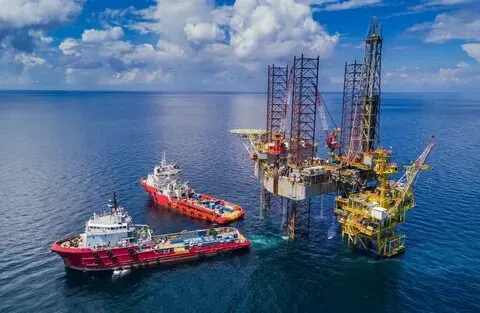
As global energy demands continue to surge, industries are looking toward new, untapped sources of resources to meet growing consumption needs. One of the most promising fields of innovation is deep offshore technology, a rapidly advancing sector focused on the exploration, extraction, and management of resources found beneath the ocean’s depths, often in ultra-deep waters. This field encompasses various technological solutions that help companies unlock the energy potential of deepwater environments, creating opportunities to access otherwise unreachable resources.
With ongoing advancements in automation, artificial intelligence, and renewable energy integration, deep offshore technology is playing an increasingly critical role in the global energy landscape. The technology has already allowed for significant strides in energy extraction, environmental protection, and operational efficiency. However, challenges remain in this highly complex, capital-intensive sector. In this article, we’ll explore the key developments, benefits, challenges, and the future outlook of deep offshore technology.
Key Developments in Deep Offshore Technology
Deep offshore technology has undergone remarkable advancements, making previously impossible exploration and extraction techniques viable. Let’s take a closer look at some of the most important technological developments that are currently shaping this field.
1. Subsea Production Systems
Subsea production systems are at the heart of deep offshore technology. These systems enable the extraction of oil and gas from wells that are located thousands of meters beneath the ocean’s surface. Components like manifolds, pipelines, and subsea trees are strategically installed on the seafloor to control and manage the flow of oil and gas from the wells.
A subsea production system is designed to function efficiently in extreme depths, and its engineering ensures that energy resources can be transported to surface platforms or floating production systems. This technology is crucial for offshore oil and gas companies as it allows them to access deepwater fields that were once thought to be inaccessible or too costly to develop.
2. Floating Production, Storage, and Offloading (FPSO)
Floating Production, Storage, and Offloading (FPSO) units are another pivotal element in deep offshore operations. These floating vessels are designed to process hydrocarbons extracted from deepwater reservoirs, providing a continuous production solution in harsh environments.
FPSOs are equipped with processing facilities that help separate oil, gas, and water, making them incredibly versatile. They also offer substantial flexibility, enabling oil and gas operations to take place in regions where building permanent infrastructure may be too costly or impractical. The use of FPSOs has greatly increased the efficiency of offshore oil and gas extraction and has allowed companies to operate in areas previously considered unreachable.
3. Autonomous Underwater Vehicles (AUVs)
Autonomous Underwater Vehicles (AUVs) have become a game-changer in the world of deep offshore technology. These remotely operated or fully autonomous vehicles play a critical role in subsea exploration, maintenance, and monitoring operations. AUVs are equipped with sensors and cameras that help inspect subsea infrastructure, monitor pipeline integrity, and detect any potential hazards to human operators.
One of the most significant benefits of AUVs is their ability to perform complex tasks in extreme underwater conditions, all while reducing risks to human life. The use of AUVs in offshore exploration also cuts operational costs by eliminating the need for costly manned missions or surface vessels, streamlining tasks like repairs and inspections, and improving operational efficiency.
Benefits of Deep Offshore Technology
The innovations in deep offshore technology have had far-reaching impacts not only on the energy industry but also on the environment and global economies. Here are a few key benefits of these technological advancements:
1. Access to Untapped Resources
One of the most significant advantages of deep offshore technology is that it grants access to previously unreachable resources. As conventional onshore and shallow water oil and gas fields continue to deplete, offshore energy reserves have become critical in meeting the world’s increasing energy demands. With energy markets evolving, factors such as crystal city electricity rates play a role in shaping how offshore energy investments contribute to a stable and competitive power landscape.
With the help of advanced subsea production systems, FPSOs, and AUVs, energy companies can now tap into deepwater oil and gas reserves that were once beyond reach. This access to untapped resources ensures a continuous supply of energy and stabilizes power lines, even as traditional resources grow scarcer.
2. Improved Safety and Efficiency
Advances in offshore technology have drastically improved safety and operational efficiency. Previously dangerous and labor-intensive offshore operations, including drilling, maintenance, and inspections, can now be handled more safely and efficiently thanks to innovations like remotely operated vehicles (ROVs) and autonomous vehicles (AUVs).
By reducing the need for human presence in hazardous conditions, these technologies lower the risk of accidents and injuries. Furthermore, by automating tasks that once required multiple personnel, these innovations streamline operations, leading to increased precision, higher productivity, and reduced operational costs.
For example, ROVs and AUVs allow for inspections and maintenance of subsea infrastructure without the need to send divers into the deepwater environment. This not only enhances safety but also reduces the time spent on each task, improving overall efficiency.
3. Environmental Monitoring and Protection
Environmental concerns are always at the forefront of deep offshore operations. The offshore energy industry must ensure that resource extraction activities do not damage the delicate marine ecosystems or pollute the oceans. As a result, modern deep offshore technologies are equipped with advanced environmental monitoring systems that help mitigate any environmental risks associated with offshore activities.
For example, technologies that can detect leaks in subsea pipelines or monitor water quality in real time are now commonplace in the industry. These systems help offshore operators quickly detect any signs of environmental degradation and take immediate action to reduce or prevent further harm. Such monitoring not only ensures compliance with environmental regulations but also demonstrates the industry’s commitment to preserving marine ecosystems.
Challenges in Deep Offshore Technology
While deep offshore technology has led to remarkable advancements, several challenges persist in the industry. These challenges must be addressed if deep offshore operations are to continue growing and evolving.
1. High Costs
Developing and deploying deep offshore technology comes with significant capital expenditure. The construction of FPSOs, subsea production systems, AUVs, and other critical infrastructure requires large investments from energy companies. The cost of building and maintaining these advanced systems can create barriers for smaller firms and deter them from entering the market.
The high cost of deep offshore operations also limits the profitability of many projects, especially in low oil-price environments. Companies need to carefully assess the economic viability of these projects to avoid expensive losses. The high costs of research, development, and deployment are challenges that must be addressed for the industry to remain competitive and sustainable in the long run.
2. Harsh Operating Conditions
Offshore environments present a range of technical and operational challenges that require the development of highly robust systems. Deepwater environments are harsh, and technology needs to be able to withstand extreme conditions like high pressure, low temperatures, and corrosive saltwater. This requires specialized materials and engineering solutions that add to the complexity and cost of deep offshore operations.
From the development of durable subsea pipelines to ensuring that all vehicles and equipment can withstand the weight of the ocean and its elements, offshore operators face continuous hurdles when it comes to designing and maintaining equipment that can function optimally in such extreme environments.
3. Environmental Concerns
Offshore operations must adhere to stringent environmental regulations, which require operators to ensure that their activities do not disrupt marine ecosystems. Environmental protection is a primary concern, but balancing efficiency with sustainability can be difficult, especially in resource-intensive projects.
Additionally, the potential for oil spills, chemical discharges, and other forms of pollution remains a concern, requiring constant vigilance. As the pressure for cleaner energy sources increases, deep offshore technology must evolve to meet the growing demand for environmentally friendly solutions while still achieving high levels of energy extraction.
The Bottom Line: The Future of Deep Offshore Technology
Despite the challenges, the future of deep offshore technology looks incredibly promising. Innovations in automation, artificial intelligence, and renewable energy are already starting to shape the way offshore operations are conducted. The integration of these technologies will continue to improve efficiency, safety, and sustainability within the industry.
As global demand for cleaner energy sources increases, deep offshore technology may also be poised to work in conjunction with renewable energy sources like offshore wind farms or marine energy harvesting systems. Combining traditional oil and gas extraction with renewable energy solutions could lead to more sustainable offshore operations in the future.
Advances in materials science are also expected to yield longer-lasting, more cost-efficient technologies, making offshore operations more economically viable in the long term. The ability to utilize deepwater resources in a way that minimizes environmental impact while still meeting global energy demands is an exciting prospect.
In conclusion, deep offshore technology is poised to remain a key player in the future of global energy production. Through continued innovation and integration of new technologies, the offshore industry will likely overcome the current challenges and unlock new possibilities for meeting the world’s ever-growing energy needs.
Explore the latest trends and insights in cryptocurrency at BuzzFeed!





